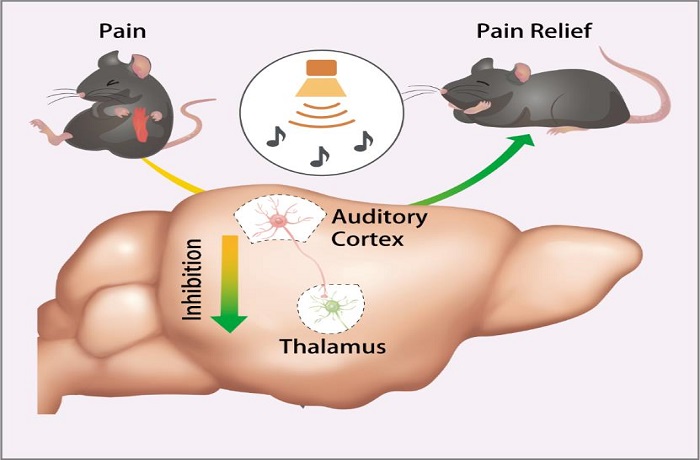Recently, the team of Associate Professor Tao Wenjuan from the School of Basic Medicine of AHMU cooperated with the team of Professor Zhang Zhi from the University of Science and Technology of China, and the team of Professor Liu Yuanyuan from the National Institutes of Health USA, and jointly published a paper entitled Sound induces analgesia through corticothalamic circuits in the international authoritative academic journal Science (IF=63.714). It reveals the subtle neural mechanism of low-intensity sound that relieves pain in different parts of the body relative to environmental sounds, and targets the sensory system which proposed a new idea for stimuli to regulate pain behavior.
This is the first time that AHMU has published original results in Science as the corresponding author. Zhou Wenjie, a special associate researcher of the University of Science and Technology of China, Ye Chonghuan, a doctoral student, Wang Haitao, a professor of Anhui University of Traditional Chinese Medicine, and Mao Yu, a 2012 graduate student of AHMU and deputy chief physician of the Department of Anesthesiology of the First Affiliated Hospital of AHMU, are the first authors of the paper. Zhang Zhi, Tao Wenjuan and Liu Yuanyuan are the co-corresponding authors of the paper.

As early as 1960, a paper in the journal Science found that music and noise can produce analgesic effects. However, for half a century, the neural mechanism of sound analgesia was not clear. Given that high-intensity sounds, such as thunder, can induce fear in humans and mice, the researchers first gave pain model mice medium-intensity and low-intensity coordinated sounds, discordant sounds, and white noise, and found that only given in low-intensity all three types of sounds can effectively alleviate pain-like behaviors in mice. In addition, some studies suggest that the analgesic effect of sound is closely related to the environment in which the individual is located. Therefore, the researchers found that the analgesic effect of sound with a 5- decibel signal-to-noise ratio (SNR) relative to the ambient sound, which was studied under different ambient noises, is optimal.
Auditory signals are generated in the periphery and ultimately transmitted to the auditory cortex (ACx) for fine encoding and analysis. As the highest center of sound processing, ACx is widely projected to the whole brain and participates in mediating fear, learning and memory, etc. Using ACx as a target, the team found by virus tracing that in the nuclei closely related to pain, ACx glutamate neurons (ACxGlu) mainly project to the posterior nucleus (PO) and posterior ventral nucleus of the somatosensory thalamus ( VP); through in vivo electrophysiological and deep calcium imaging recordings, it was found that sound processing at 5-dB SNR inhibits the projection of ACxGlu to PO and VP, thereby inhibiting the neurons activated by PO and VP during pain; through optogenetic and chemical genetics studies have found that regulating ACxGlu→thalamic projection significantly affects pain threshold in mice.
The research was funded by the National Science Foundation of China, the Science and Technology Innovation 2030 (China Brain Project) of the Ministry of Science and Technology, the Natural Science Foundation of the Anhui Provincial Department of Education, and Anhui Medical University.
Paper link: https://www.science.org/doi/10.1126/science.abn4663
